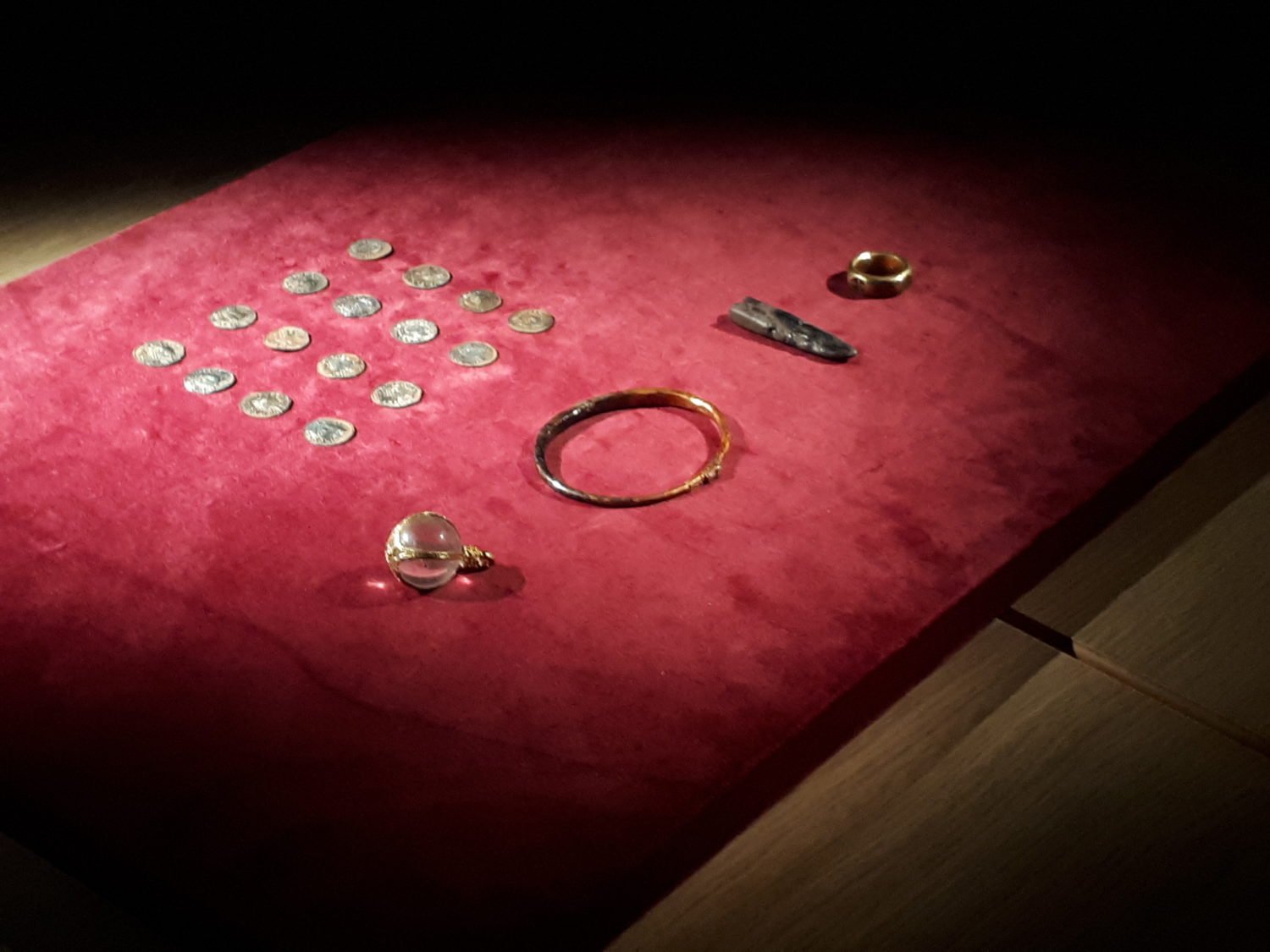
Two metal detectorists have been convicted of the theft of a 9th-century hoard of Viking coins that they discovered in a farmer’s field. Instead of declaring the $15.4 million trove, which included jewelry and gold and silver ingots, they are going to jail for concealing the remarkable find, much of which is still missing, that could rewrite the early history of England.
George Powell (38) and Layton Davies (51) found the buried trove of around 300 coins near Leominster in central England in 2015. On Thursday, November 21, the two were convicted of theft and concealment of what is being called one of the largest hoards of its kind found to date. If they had declared the find, they might have split a huge reward with the landowner.
Instead, the pair tried to sell some of the coins, and are now heading to jail. Powell was sentenced to ten years in prison, and Davies received a eight-and-half-year sentence. Coin dealers Simon Wicks (56) and Paul Wells (60) were also convicted of concealment yesterday. Wicks received a five-year prison sentence while Wells is due be sentenced next month.
The police were tipped off that a large hoard had been found by members of the metal detecting community, as well as the British Museum. The rogue detectorists, who were digging without the landowner Lord Cawley’s permission, claimed that talk of the coin hoard had been a rumour. The recovered finds are worth £3 million ($3.8 million), but the total hoard is estimated to be worth as much as £12 million ($15.4 million).
Gareth Williams, a British Museum curator of Medieval coins who is an expert on the Viking age, said that the find is historically important as it dates back to the early English period. “Discoveries such as this are an important part of our national heritage, and the Treasure Act is designed to ensure that such finds can be acquired by museums for the benefit of the general public, rather than being quietly sold on the black market,” Williams said. Many pieces from the hoard are still at large, possibly in the possession of private collectors.
“Britain has the most generous system in the world for rewarding finders when they follow the law,” Williams added. “Unfortunately, this needs to be balanced with suitable penalties when they do not.” If reported within 14 days, a reward up to the market value of the treasure may be split between the finders and the landowner.
A coin displaying both emperors. Source: British Museum.
Rewriting England’s History
The trove included a ring, a serpent-shaped bracelet, a crystal ball pendant from the 5th or 6th century, as well as several gold and silver ingots (bars) that were stacked on top of the coins. Experts believe the hoard was hidden more than 1,000 years ago by a Viking warrior after Alfred the Great’s victory over the Scandinavian invaders in 878.
The hoard could help rewrite the early history of England. Several examples of coins show two rulers side-by-side, King Alfred the Great of Wessex and his contemporary, Ceolwulf II of Mercia. The “Two Emperors” coins indicates there was an alliance between the two kingdoms. Later historical sources have demoted the lesser known Ceolwulf to the role of a pawn of the Vikings.
Of the hundreds of coins found, only 31 pieces—valued between £10,000 and £50,000 ($12,900 and $64,300)—have been retrieved along with some jewelry. The police are hoping more will emerge, and have appealed to collectors to come forward.
Superintendent Sue Thomas said: “I hope the result from this trial demonstrates to the metal detecting community we take this sort of crime very seriously.” The sentencing judge said the treasure belongs to the nation, and that the detectorists “cheated the public,” as well as the farmer, and the landowner.